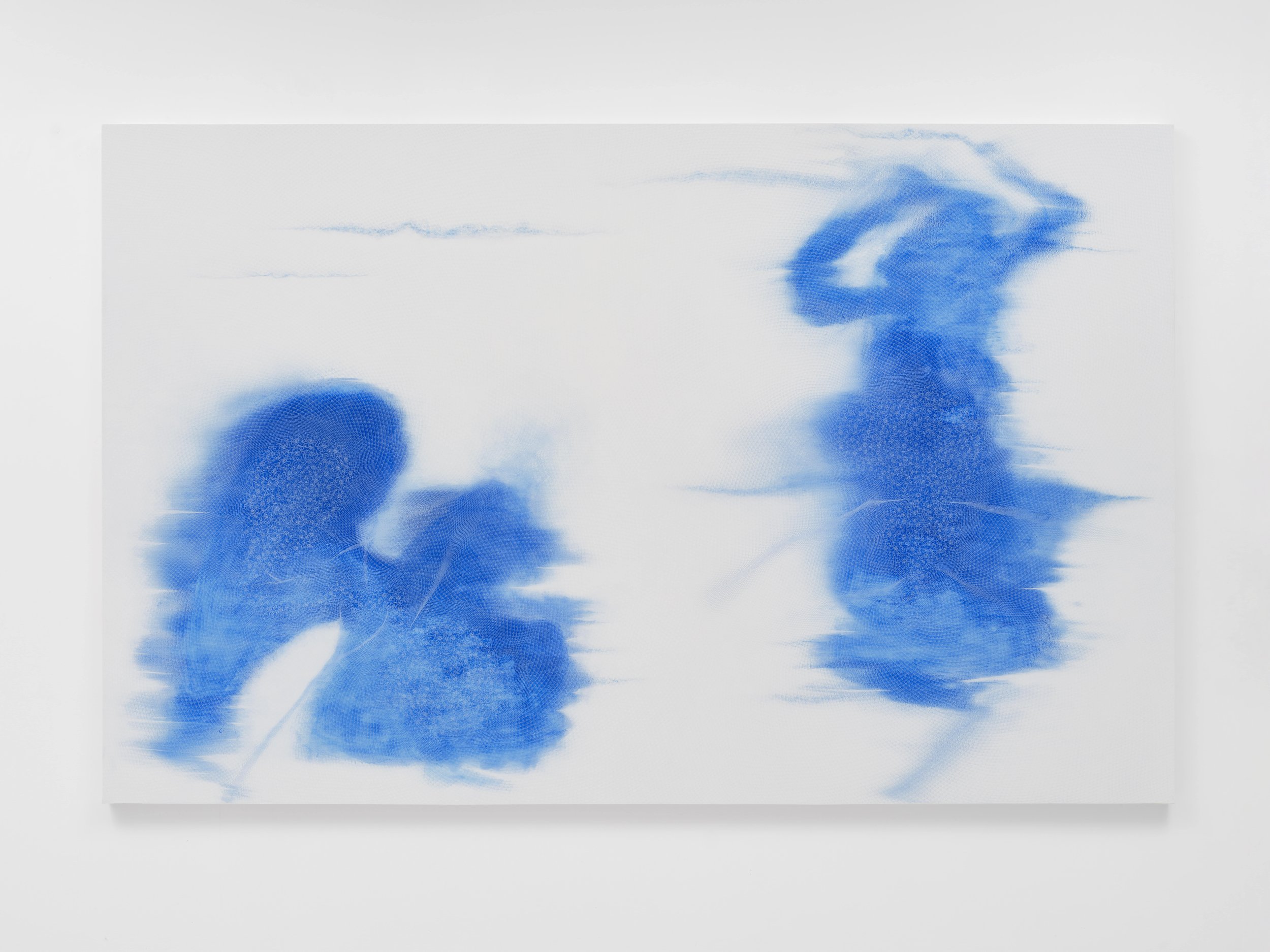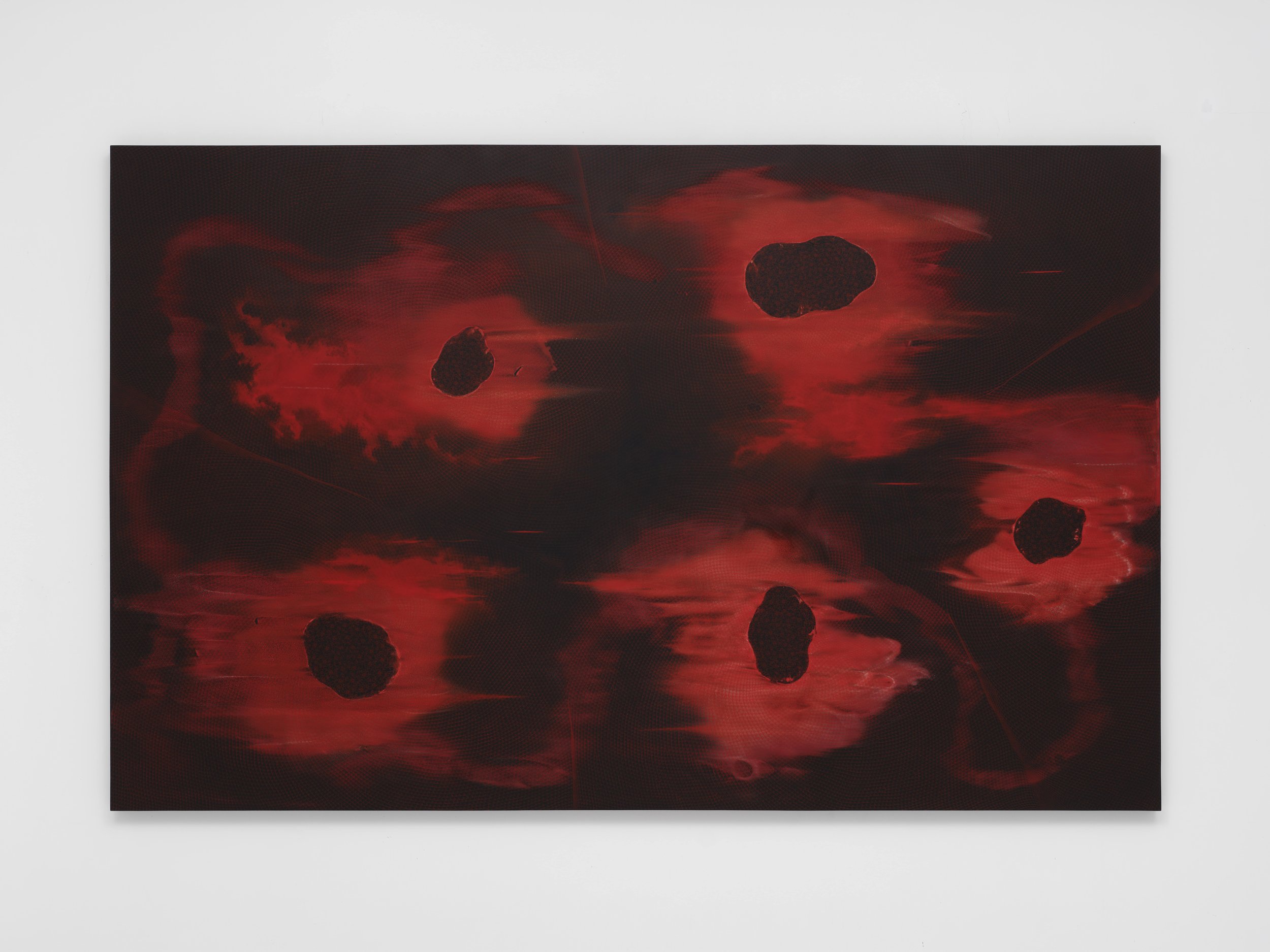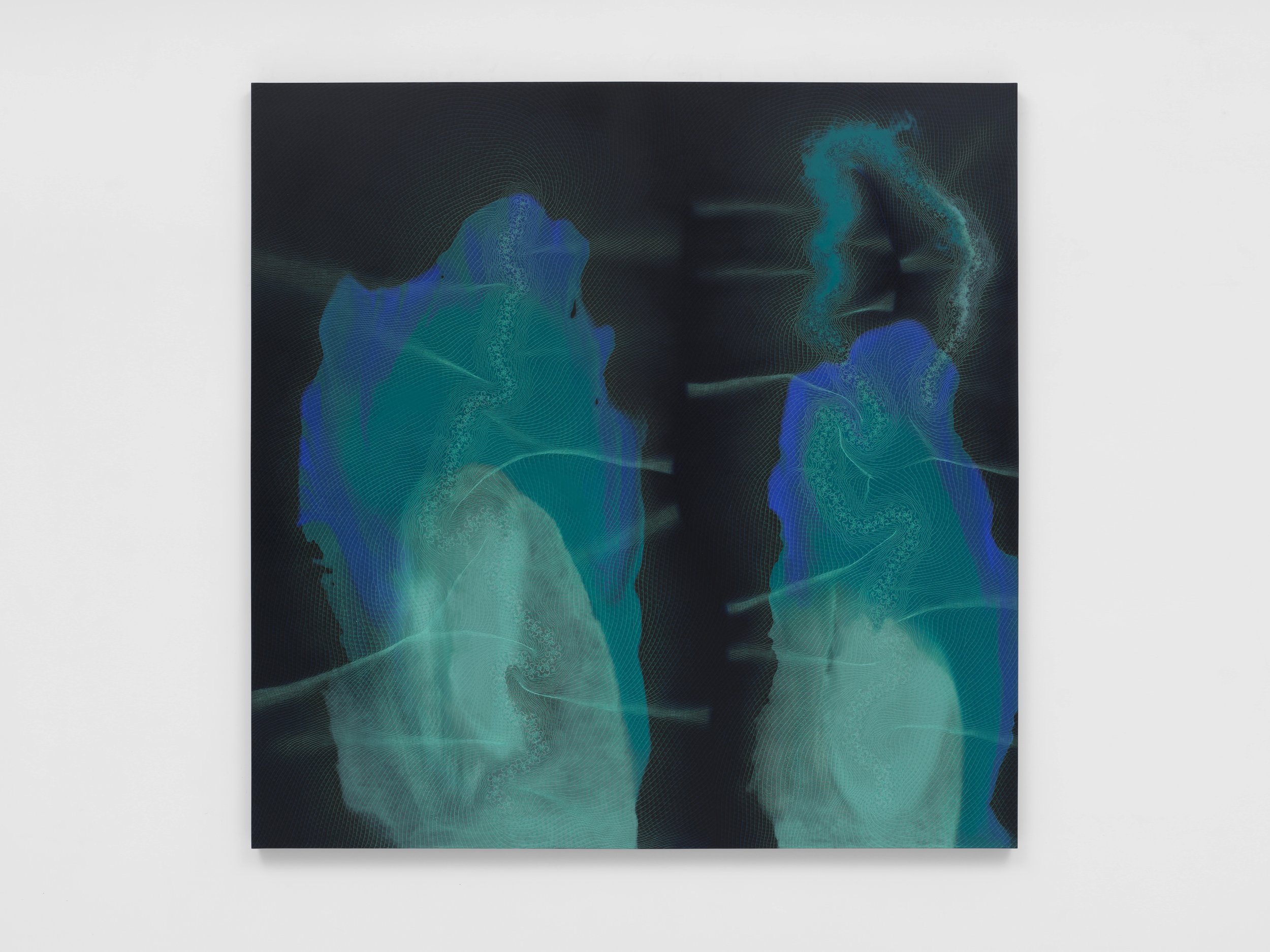Shirazeh Houshiary: The Sound of One Hand
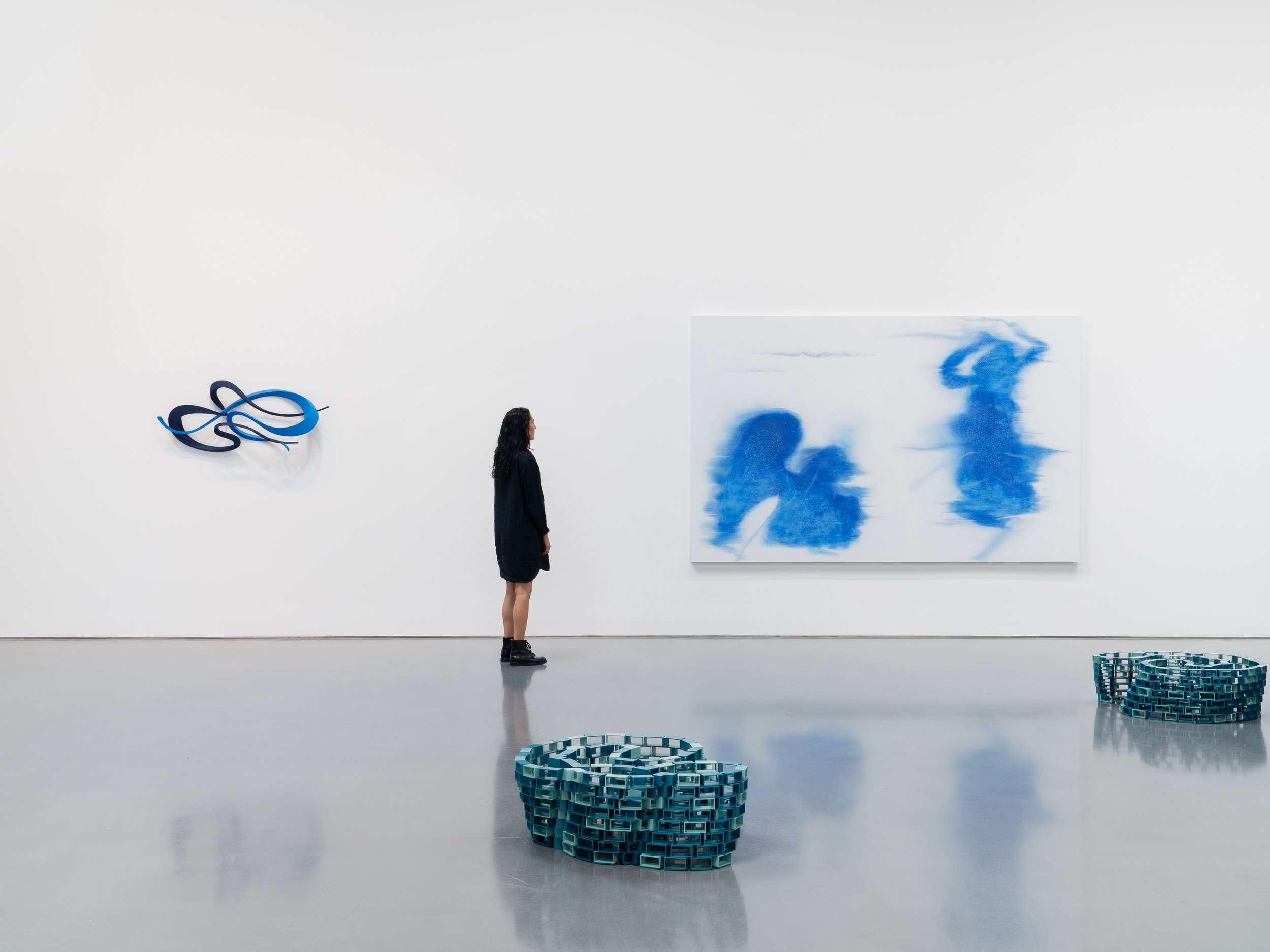


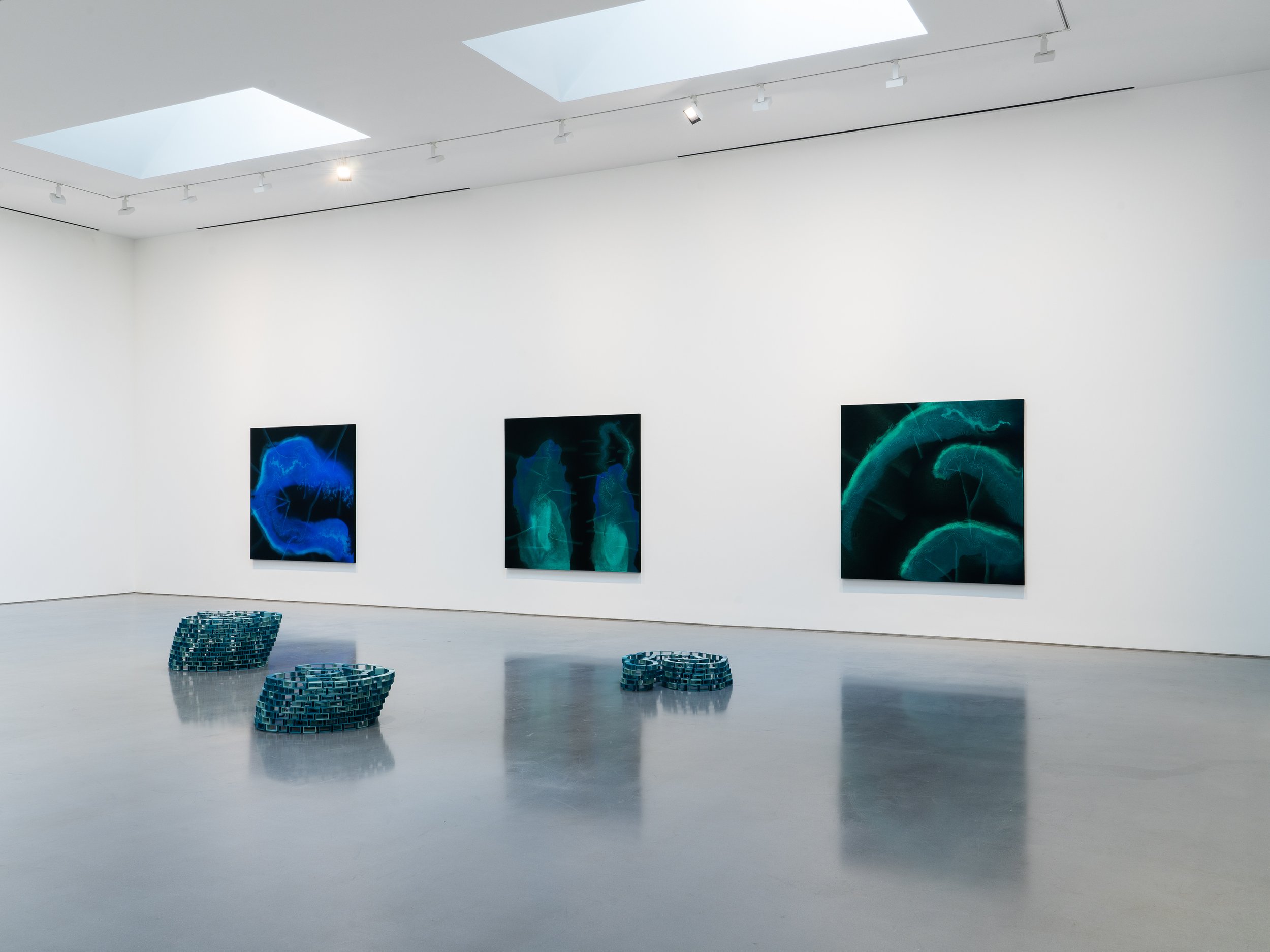
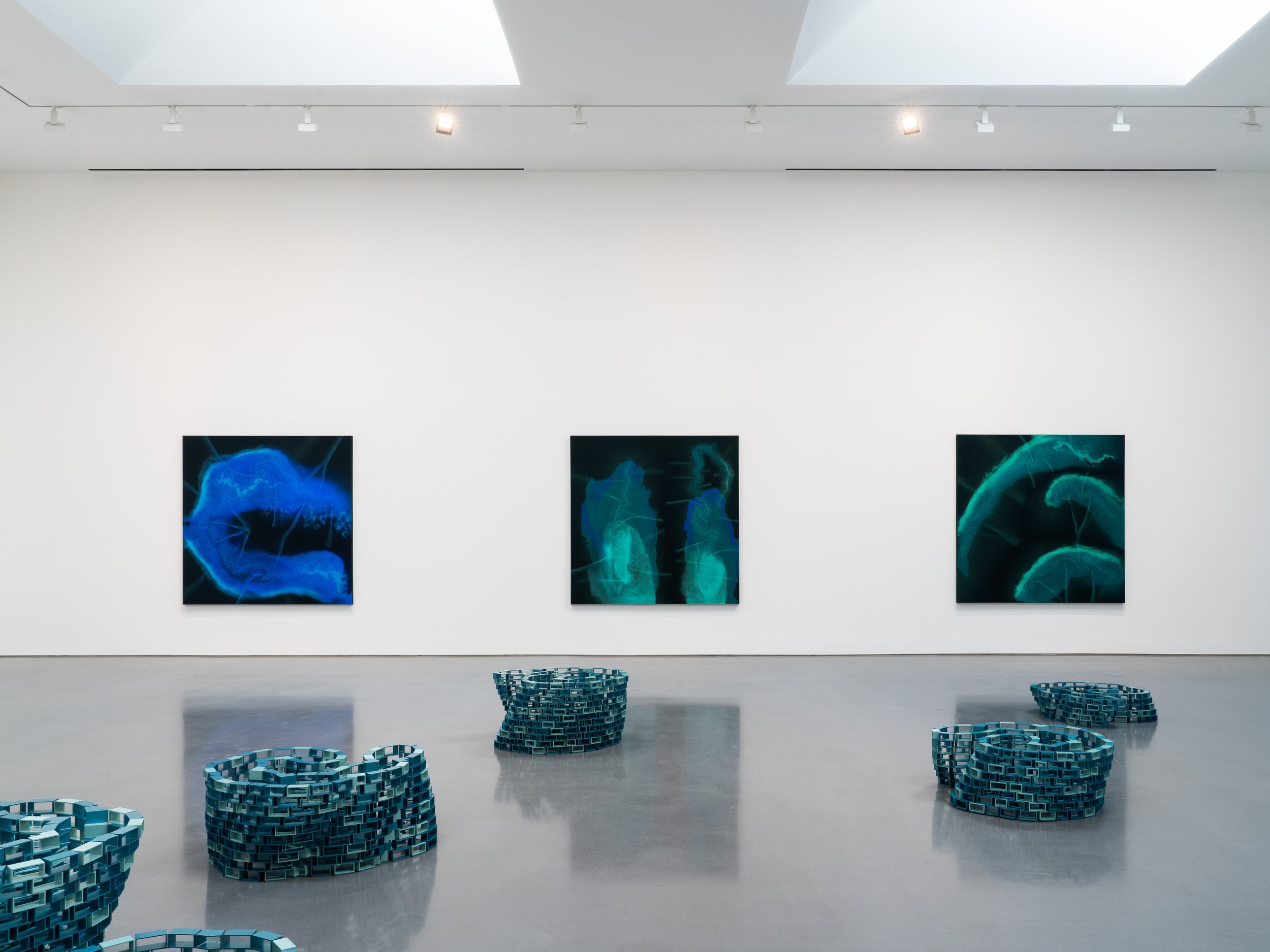
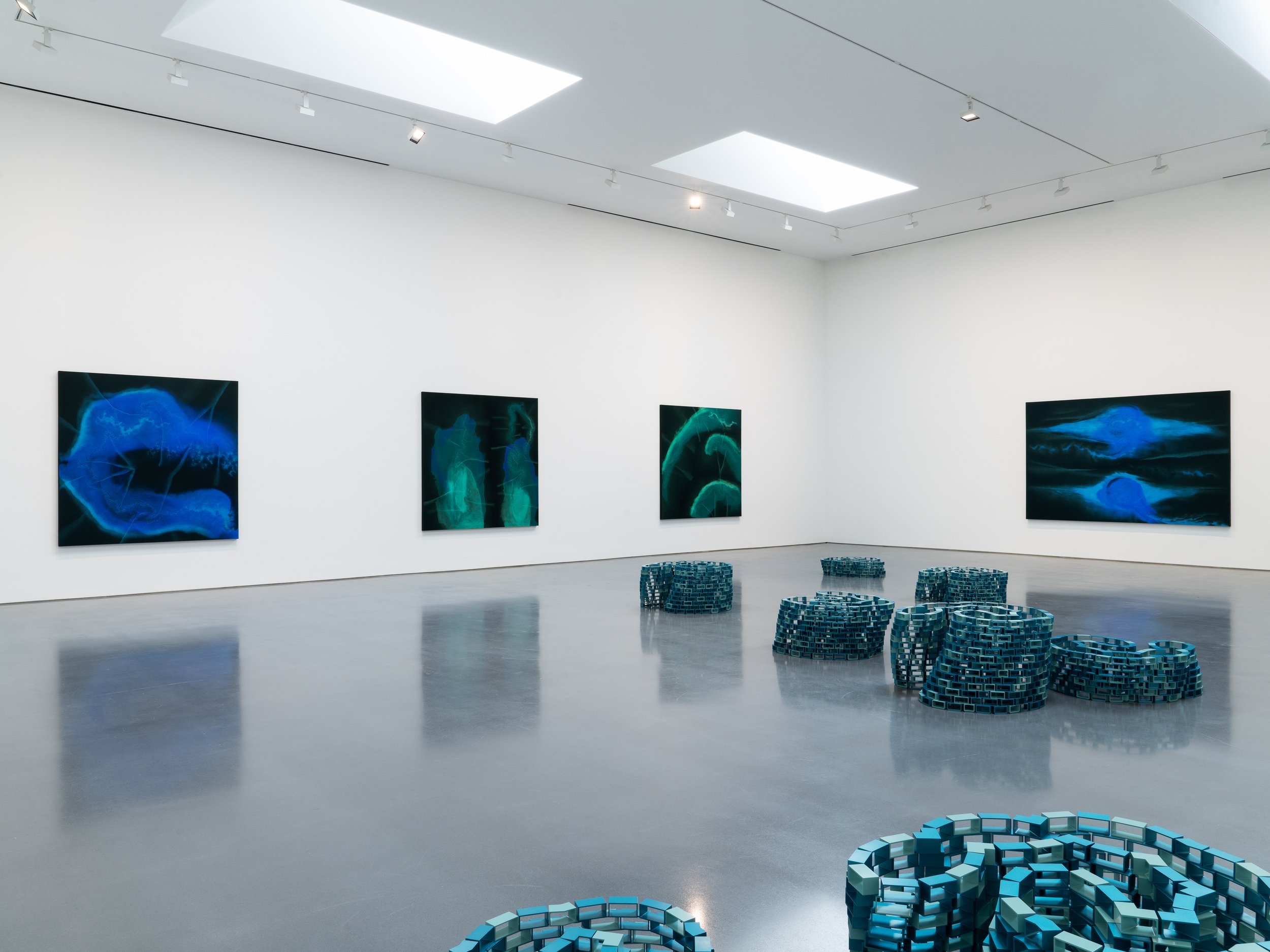
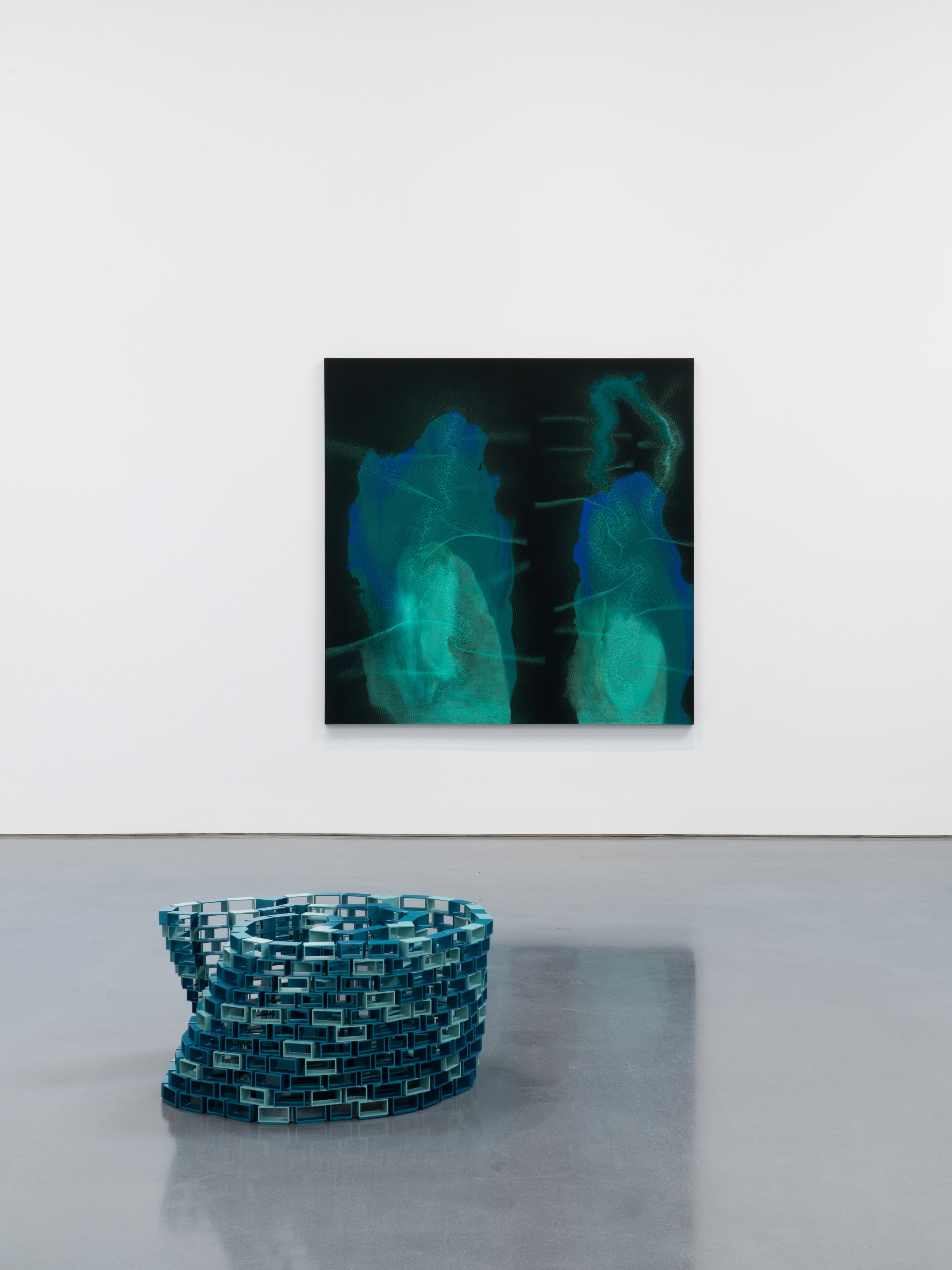
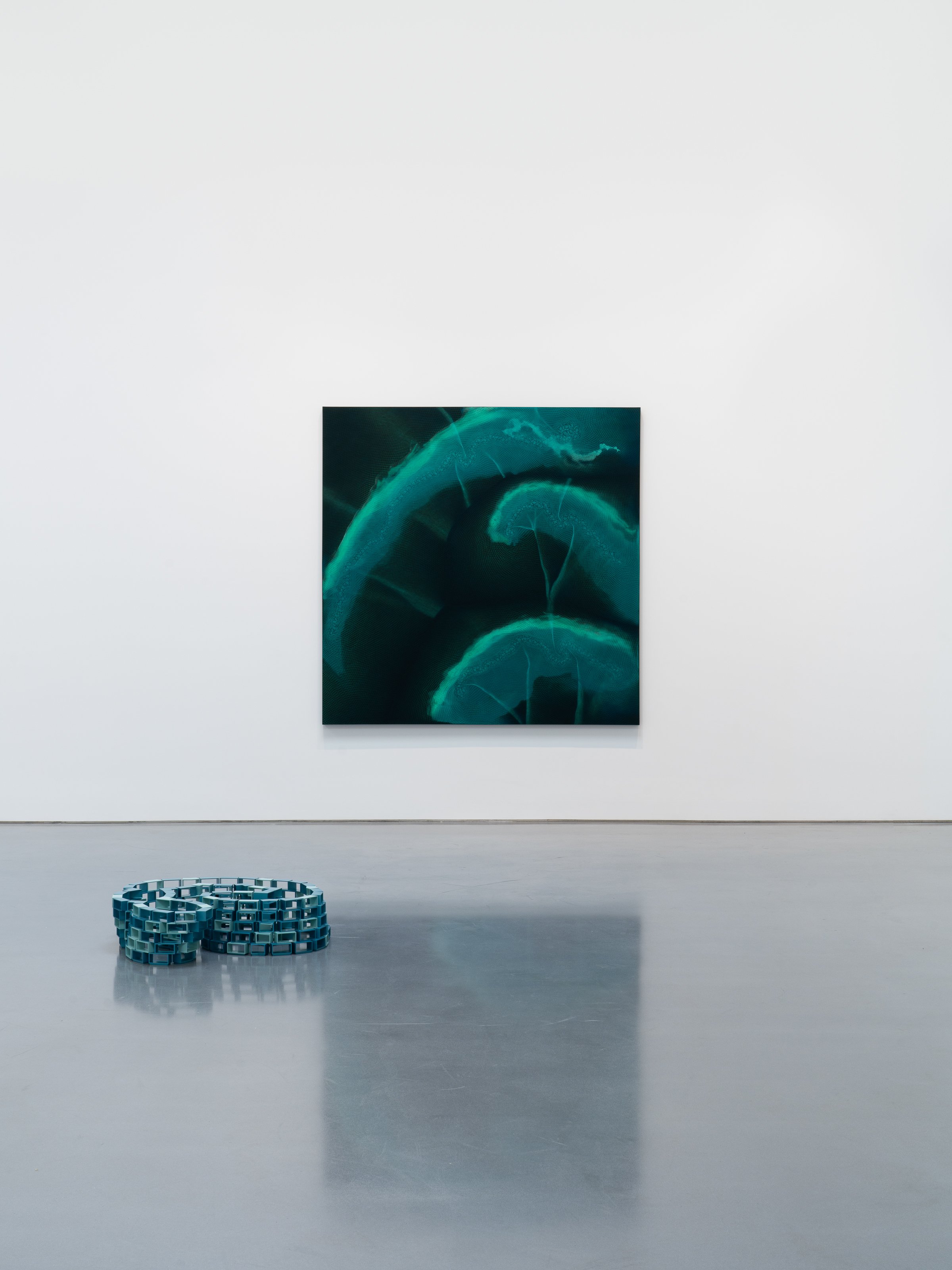
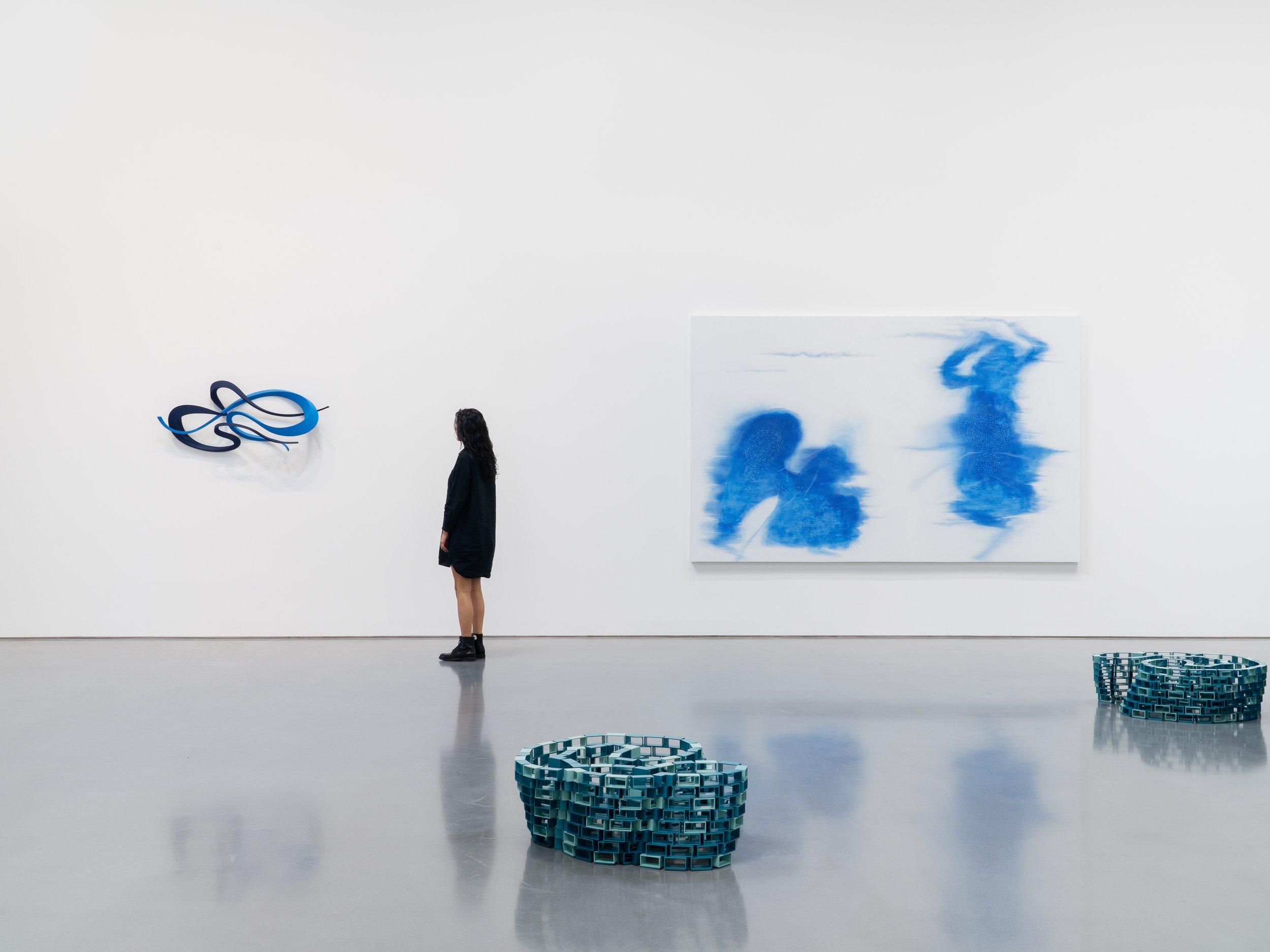

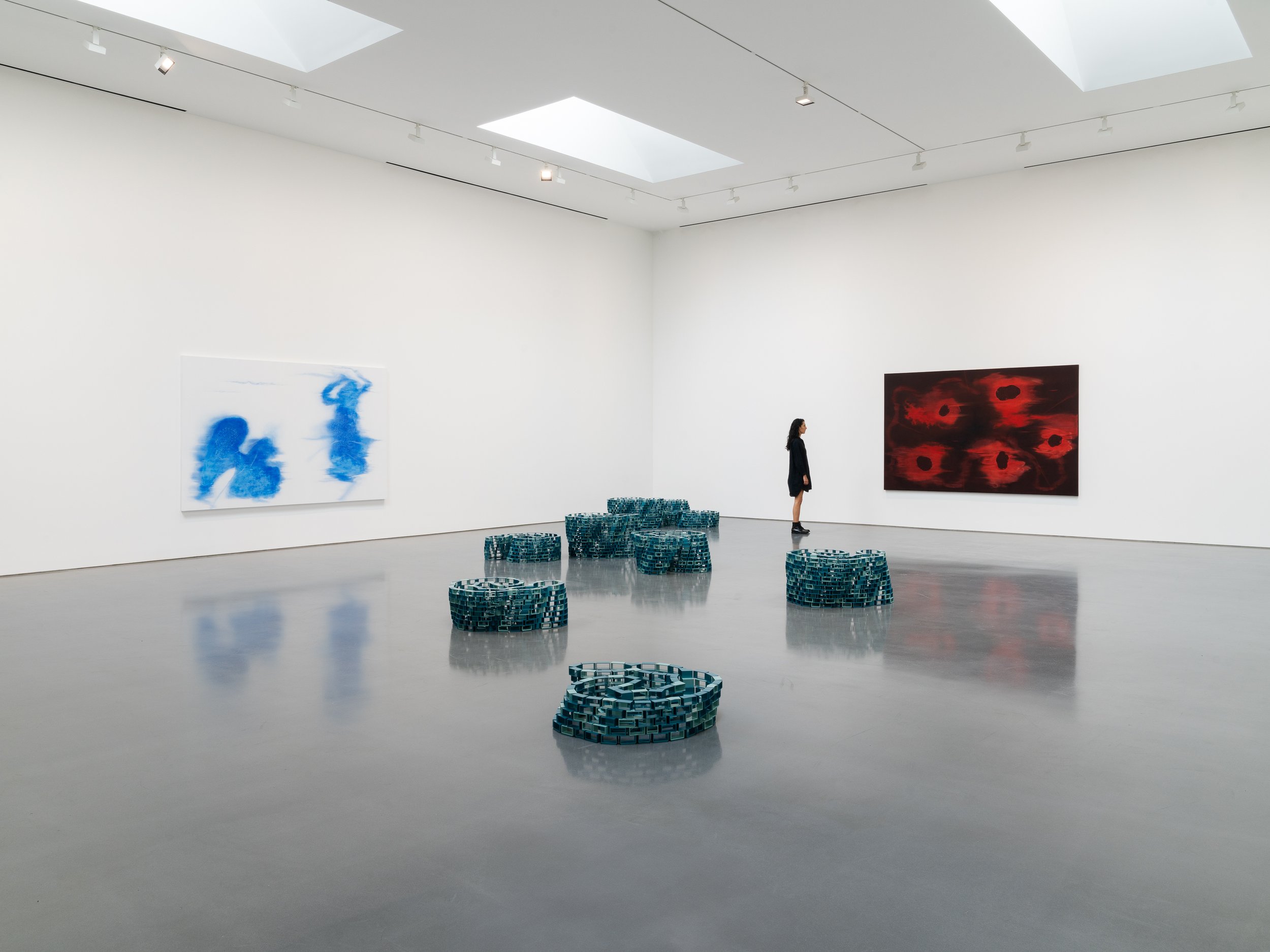


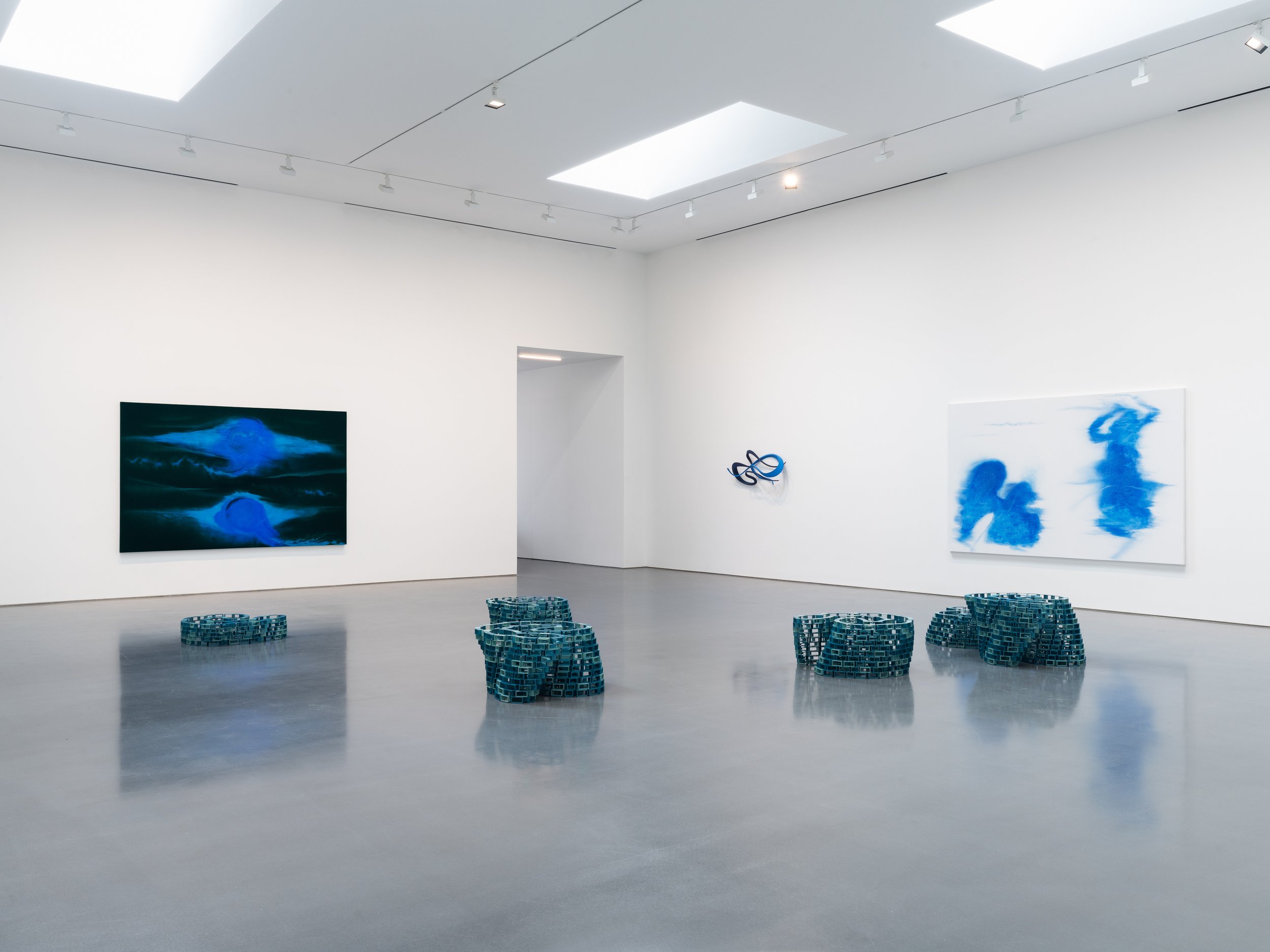
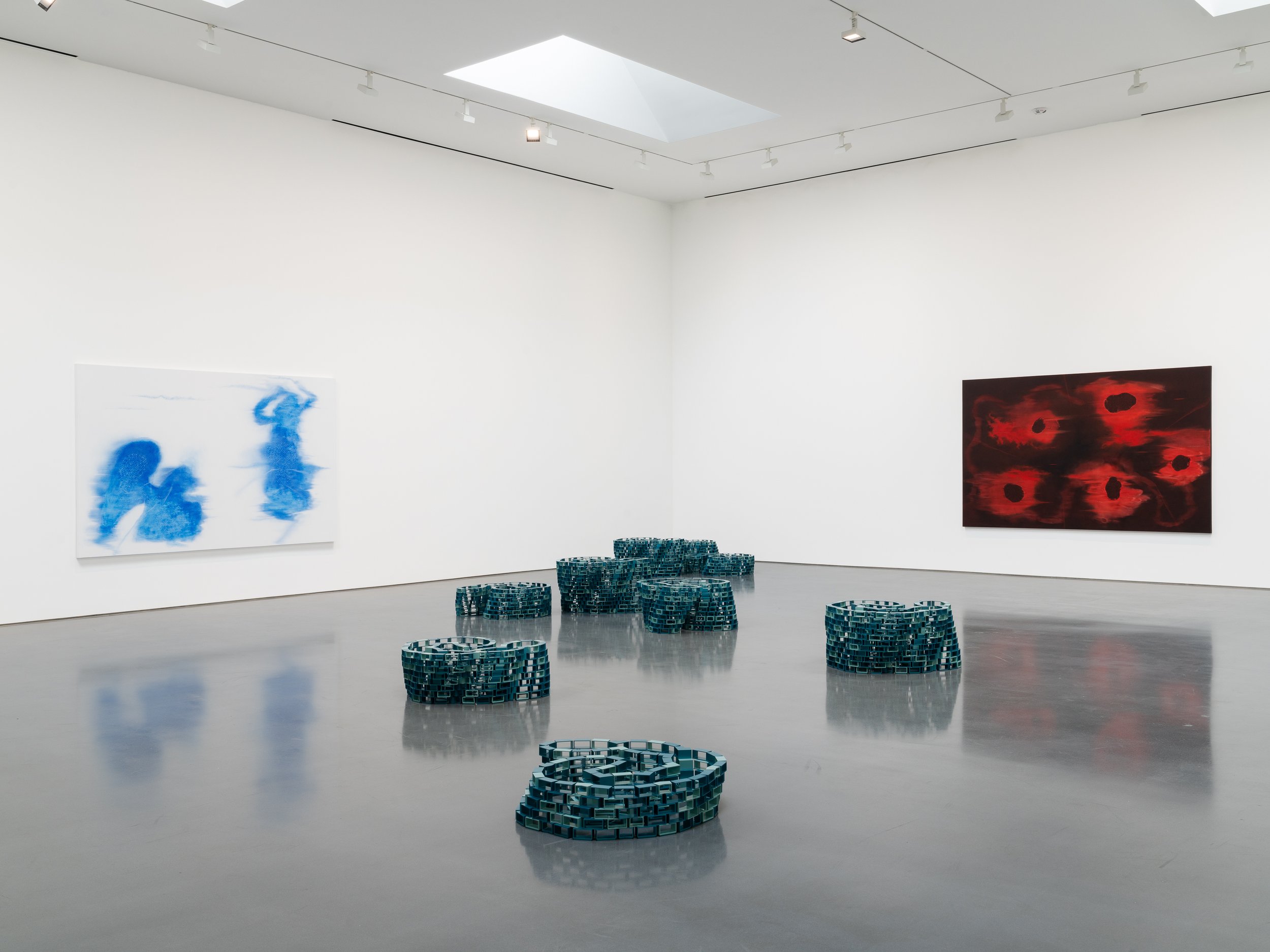
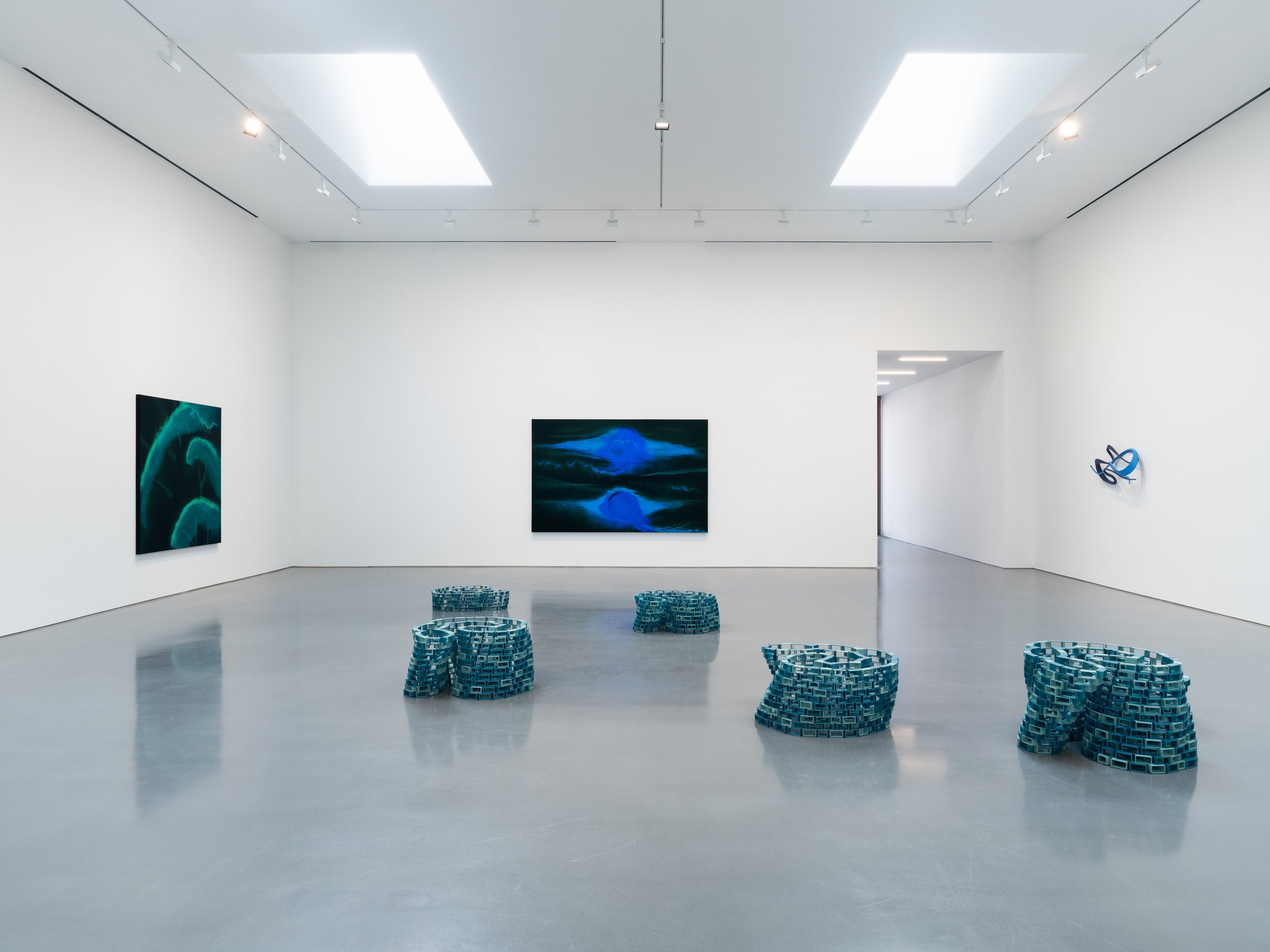
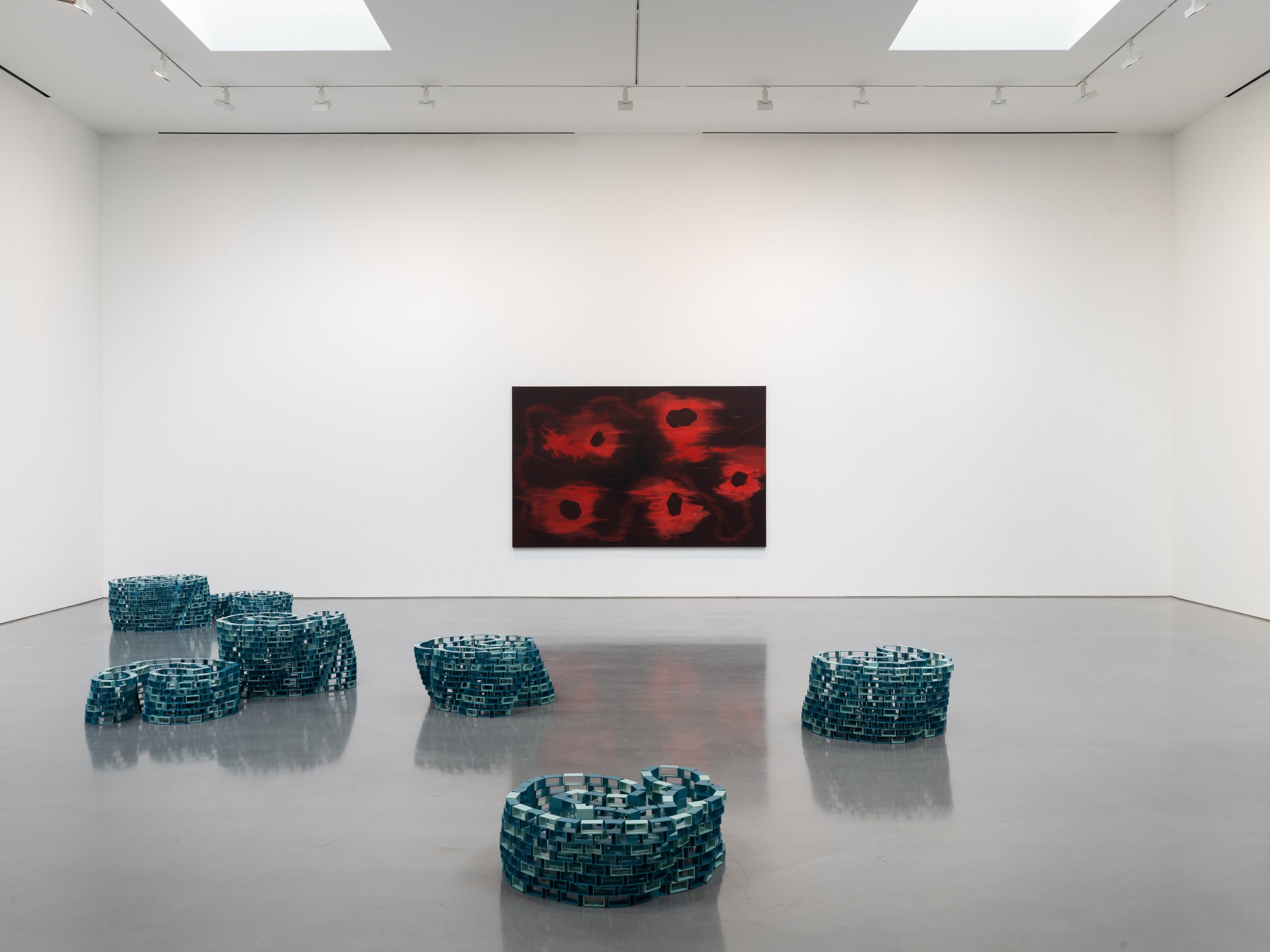
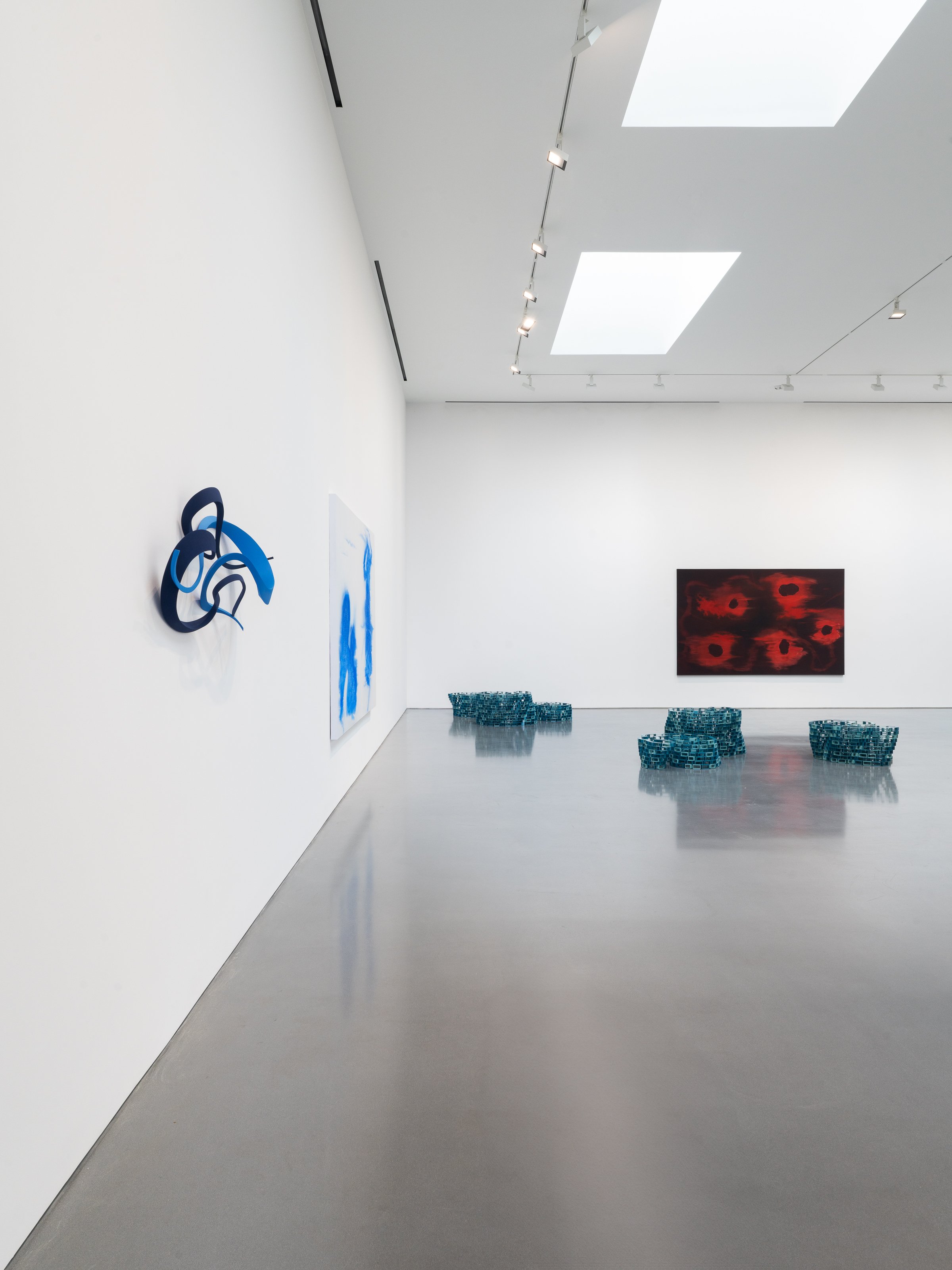
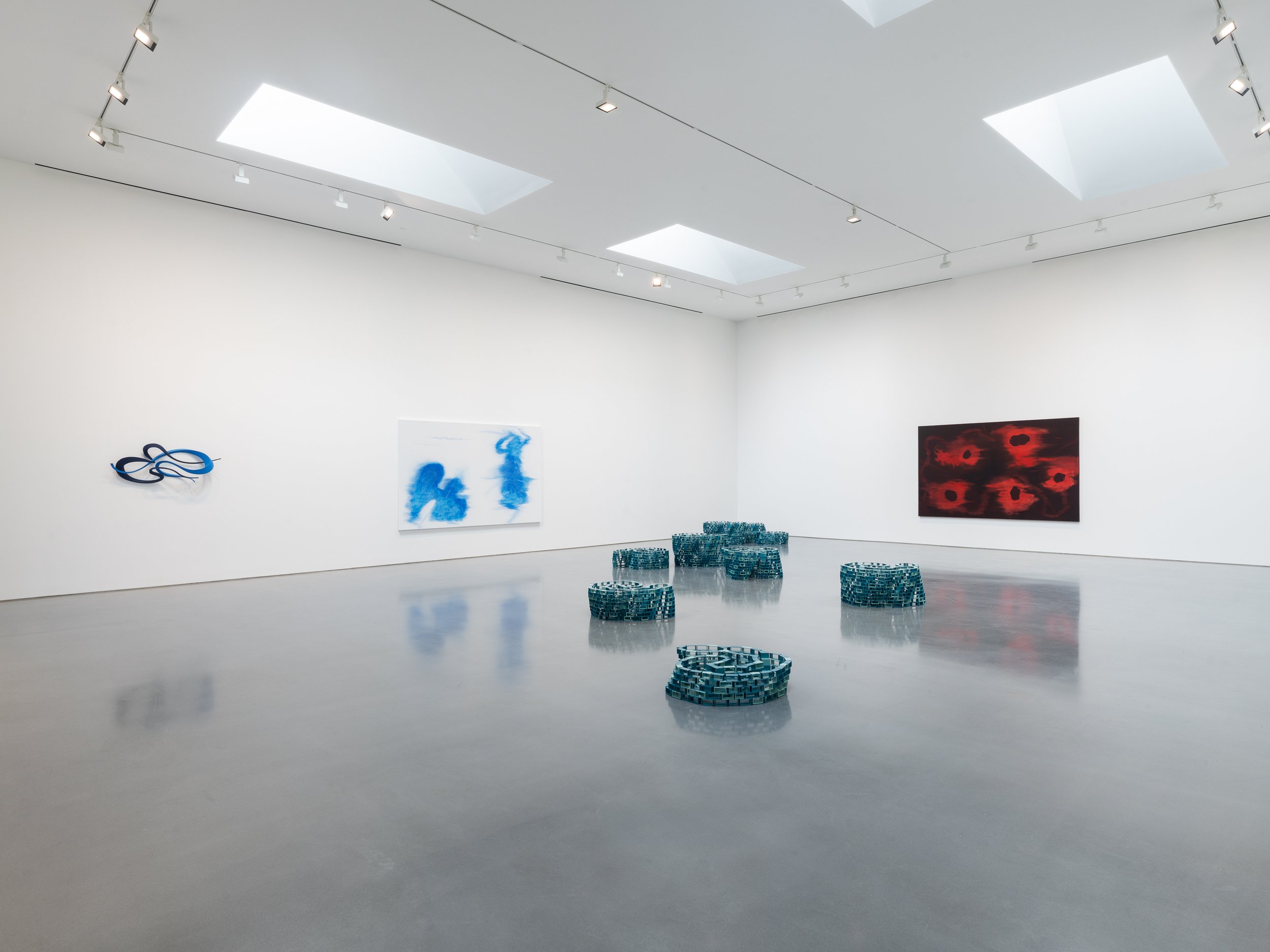
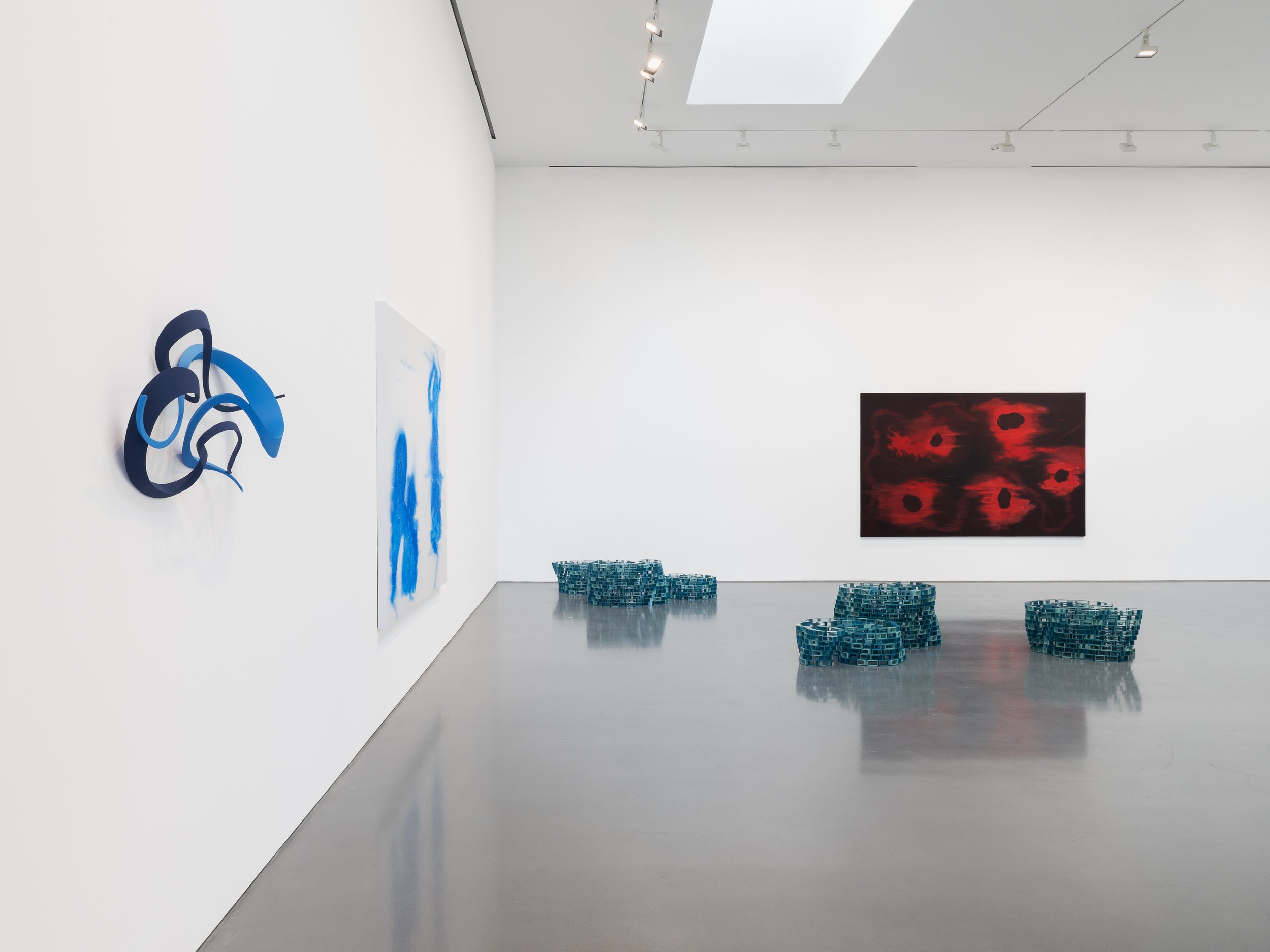
Installation view: Shirazeh Houshiary, The Sound of One Hand, Lisson Gallery Los Angeles (14 September – 2 November 2024) © Shirazeh Houshiary, Courtesy Lisson Gallery.
For her first solo show in Los Angeles for over a decade, the British artist Shirazeh Houshiary presents new and recent works, exploring the origins of life and the mysteries of the cosmos, from a microscopic cellular level, to the stratospheric phenomenon of the aurora borealis. The show’s title relates to a Zen Buddhist teaching that instructs the student to listen to the sound of one hand clapping, in order to open their mind to such a possibility and transcend the constraints of the physical body. Despite not being a Zen practitioner, Houshiary realised that her work revolves around the insistent sound made by one of her hands, making tiny, looping, scratched marks in pencil onto large aluminum surfaces, building up worlds through the silence of her inscribed words.
Shirazeh Houshiary Earth Lament, 2023 Pigment and pencil on Aquacryl on canvas and aluminium 190 x 300 cm 74 3/4 x 118 1/8 in © Shirazeh Houshiary, Courtesy Lisson Gallery
Houshiary’s abstract paintings emerge from an initial pour of liquid color that floods the surface in irregular pools, before she then covers these areas with her own calligraphic gestures in graphite, which are in fact tiny repetitions of the Arabic phrases: “I am” and “I am not”, which she also likens to the natural act of inhaling and exhaling. For one of the two largest works in the show, entitled Enchanter (2024), Houshiary applies red pigment and pencil to a black ground in five ring shapes, recalling structures of carbon particles linked in a chain. Matching this in scale but cooler in tone, is the painting Earth Lament (2023), with two silhouetted blue figures that somehow materialized from the sedimented pigment, one appearing to soar and the other seemingly being dragged down.
This accidental figuration also occurs in the work Cicada (2023), which could just as easily be a depiction of the wings of this insect as it could be a representation of its rhythmic song. At the other end of the scale are the galactic indigo swirls of So Far So Near (2024) and the bands of ethereal light crisscrossing the work titled Aurora (2023), recalling those seen occasionally streaking across a night sky.
Shirazeh Houshiary Enchanter, 2024 Pigment and pencil on Aquacryl on canvas and aluminium 190 x 300 cm 74 3/4 x 118 1/8 in © Shirazeh Houshiary, Courtesy Lisson Gallery
Occupying the floor is a sculptural installation in nine parts, made from an open latticework of aluminum bricks in blue and green hues, each with the same footprint, but all at different heights, growing at increments of one layer at a time (the shortest has five layers, the highest thirteen). Entitled Maelstrom (2022), these curved forms, both hard and supple at the same time, recall not only the molecular structures of the red painting Enchanter, or “that primeval storm within the spiral of creation where something grows,” as the artist puts it, but also the shape of the ouroboros snake eating its own tail.
From Left to Right
Cicada, 2023 Pigment and pencil on Aquacryl on canvas and aluminium, 190 x 190 x 5 cm, 74 3/4 x 74 3/4 x 2 in © Shirazeh Houshiary, Courtesy Lisson Gallery, Aurora, 2023, Pigment and pencil on Aquacryl on canvas and aluminium,190 x 190 x 5 cm, 74 3/4 x 74 3/4 x 2 in, © Shirazeh Houshiary, Courtesy Lisson Gallery, So Far So Near, 2024,Pigment and pencil on Aquacryl on canvas and aluminium 190 x 300 cm, 74 3/4 x 118 1/8 in,© Shirazeh Houshiary, Courtesy Lisson Gallery
A second sculpture, seemingly another form defying logic and gravity, bursts from the wall. Its two sinuous, entangled lines are the artist’s approximation of the movement of a solitary wave – lending it the name Soliton (2024) – which is a type of swelling or surging motion that is not dependent on previous pulses, or followed by other waves. From such unfathomable objects, to minute molecules and gigantic expanses of space, Houshiary’s art works represent a journey through everything from the chaos and messiness of the Big Bang to the silent contemplation of the resulting energies that surround every one of us.
About the artist
Since rising to prominence as a sculptor in the 1980s, Shirazeh Houshiary’s practice has swelled to encompass painting, installation, architectural projects and film. “I set out to capture my breath,” she said in 2000, to “find the essence of my own existence, transcending name, nationality, cultures.” Veils, membranes and mists are leitmotifs in work that tries to visualise modes of perception, spanning the scientific and the cosmic while drawing on sources as wide-ranging as Sufism, Renaissance painting, contemporary physics and poetry. Houshiary finds succour in the transformation of material: Arabic words, one an affirmation the other a denial, are pencil-stroked onto canvas so lightly, and clouded over by finely wrought skeins of pigment, that they morph in front of the naked eye and defy reproduction. So too, aluminum armatures and elliptical brick towers, charged with dynamic tension, appear different from every angle, as if negating their own presence; her commission for the East window of St Martin in the Fields, London, presents a cross, warped and spanning from a circular motif, as if reflected in water. “The universe is in a process of disintegration,” she says, “everything is in a state of erosion, and yet we try to stabilise it. This tension fascinates me and it’s at the core of my work” (2013).
Shirazeh Houshiary was born in Shiraz, Iran in 1955, where she attended university before moving to London, UK in 1974. She has a BA from Chelsea School of Art (1979) and lives and works in London, UK. She has had solo exhibitions at Lisson Gallery, London (2021), Shanghai (2020), and New York (2017); Singapore Tyler Print Institute, Singapore (2016); The Douglas Hyde Gallery, Dublin, Ireland (2007); Tate Liverpool, UK (2003); Islamic Gallery, British Museum, London, UK (1997); Magasin-Centre national d’art contemporain, Grenoble, France (1995); University of Massachusetts, Amherst, MA, USA (1994); Camden Arts Centre, London, UK (1993); Musée Rath, Geneva, Switzerland (1988); and in 2013, her exhibition ‘Breath’ was a celebrated Collateral Event of the 55th Venice Biennale in Italy.
Recent group exhibitions include: ‘Artists and the Rothko Chapel: 50 Years of Inspiration’, Moody Center for the Arts, Rice University, Houston, Texas, USA (2021); ‘Abstraction and Calligraphy − Towards a Universal Language’, Louvre Abu Dhabi in collaboration with Centre Pompidou, Abu Dhabi, UAE (2021); ‘Spirit and Endeavour’, Salisbury Cathedral, Salisbury, UK (2020); Jesus College, Cambridge, UK (2017); Fondazione Palazzo Albizzini, Collezione Burri, Citta di Castello, Perugia, Italy (2016); University of Michigan Museum of Art, Ann Arbor, MI, USA (2014). Her work has been included in major group exhibitions since the 1980s including: Dayton Art Institute, Dayton, OH, USA (2011); Museum of Modern Art, New York, NY, USA (2007); Peggy Guggenheim Collection, Venice, Italy (2002); Rijksmuseum Kröller-Müller, Otterlo, Netherlands (1990); Centre Pompidou, Paris, France (1989); Louisiana Museum, Humlebaek, Denmark (1986). She has also participated in numerous biennials including Cartagena deIndias, Colombia (2014); Kiev Biennale, Ukraine (2012); the 17th Biennale of Sydney, Aus
About Lisson Gallery
Lisson Gallery is one of the most influential and longest-running international contemporary art galleries in the world. Today the gallery supports and promotes the work of more than 70 international artists across spaces in London, New York, Los Angeles, Shanghai and Beijing. Established in 1967 by Nicholas Logsdail, Lisson Gallery pioneered the early careers of important Minimal and Conceptual artists such as Art & Language, Carl Andre, Daniel Buren, Donald Judd, John Latham, Sol LeWitt, Richard Long and Robert Ryman among many others. It still works with many of these artists and others of that generation, from Carmen Herrera and Olga de Amaral to Hélio Oiticica and Lee Ufan. In its second decade the gallery introduced significant British sculptors to the public for the first time, including Tony Cragg, Richard Deacon, Anish Kapoor, Shirazeh Houshiary and Julian Opie. Since 2000, the gallery has gone on to represent many more leading international artists such as Marina Abramović, Ai Weiwei, John Akomfrah, Liu Xiaodong, Otobong Nkanga, Pedro Reyes, Sean Scully, Hiroshi Sugimoto and Wael Shawky. It is also responsible for raising the international profile of a younger generation of artists including Dana Awartani, Cory Arcangel, Garrett Bradley, Ryan Gander, Hugh Hayden, Haroon Mirza, Laure Prouvost and Cheyney Thompson.
The exhibition opened on September 13 and will run through till October 26, 2024. The exhibition is being held at 1037 N. Sycamore Avenue, at the Los Angeles location
For more information about this exhibition and others, please visit the Lisson Gallery here. The gallery can also be found on Facebook, YouTube, and Instagram.
